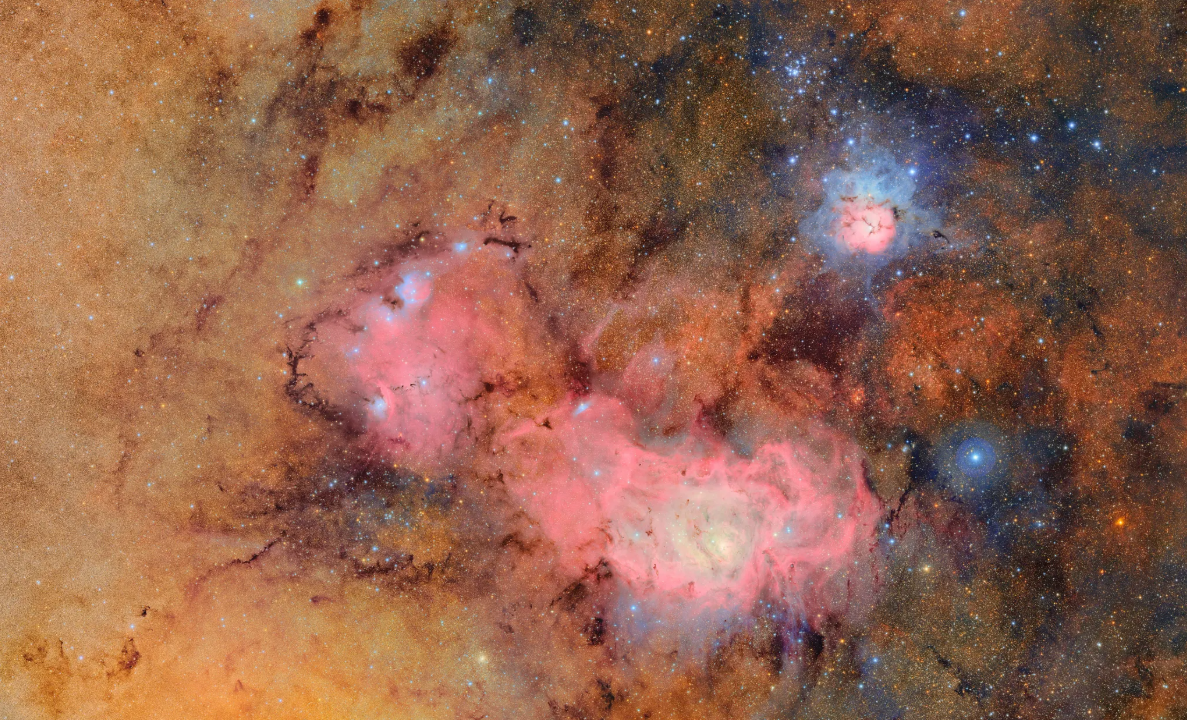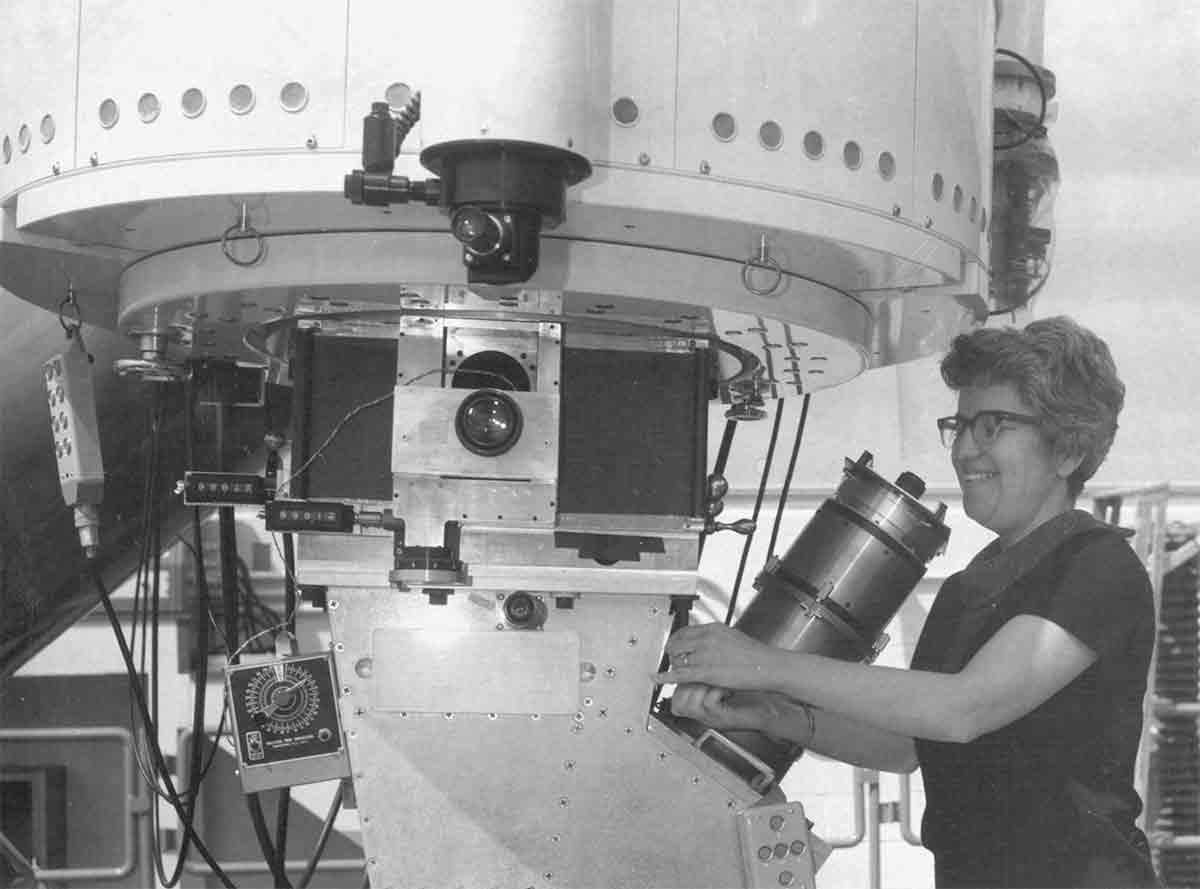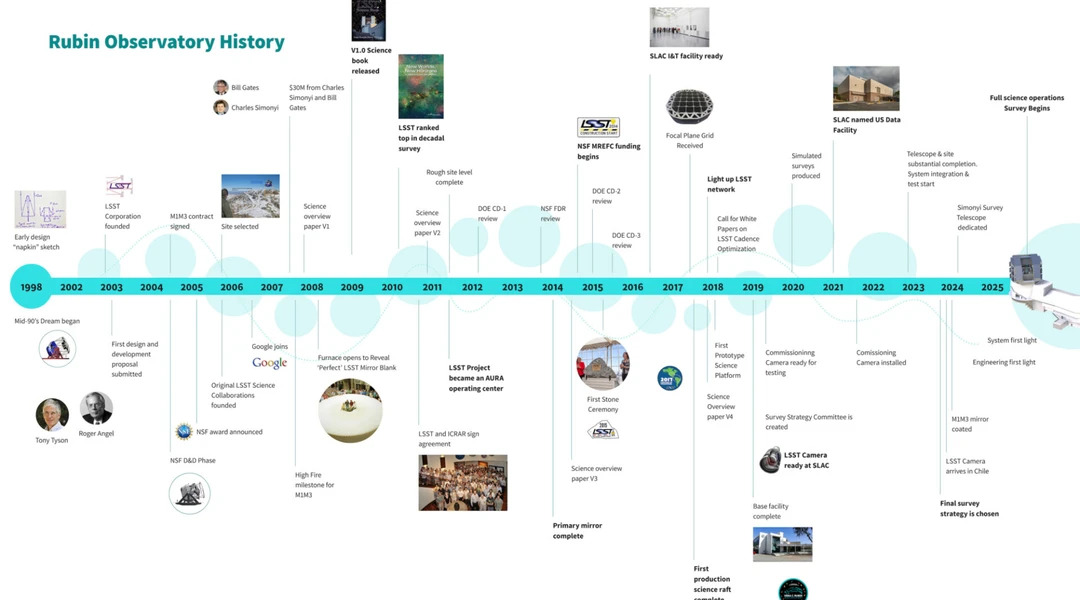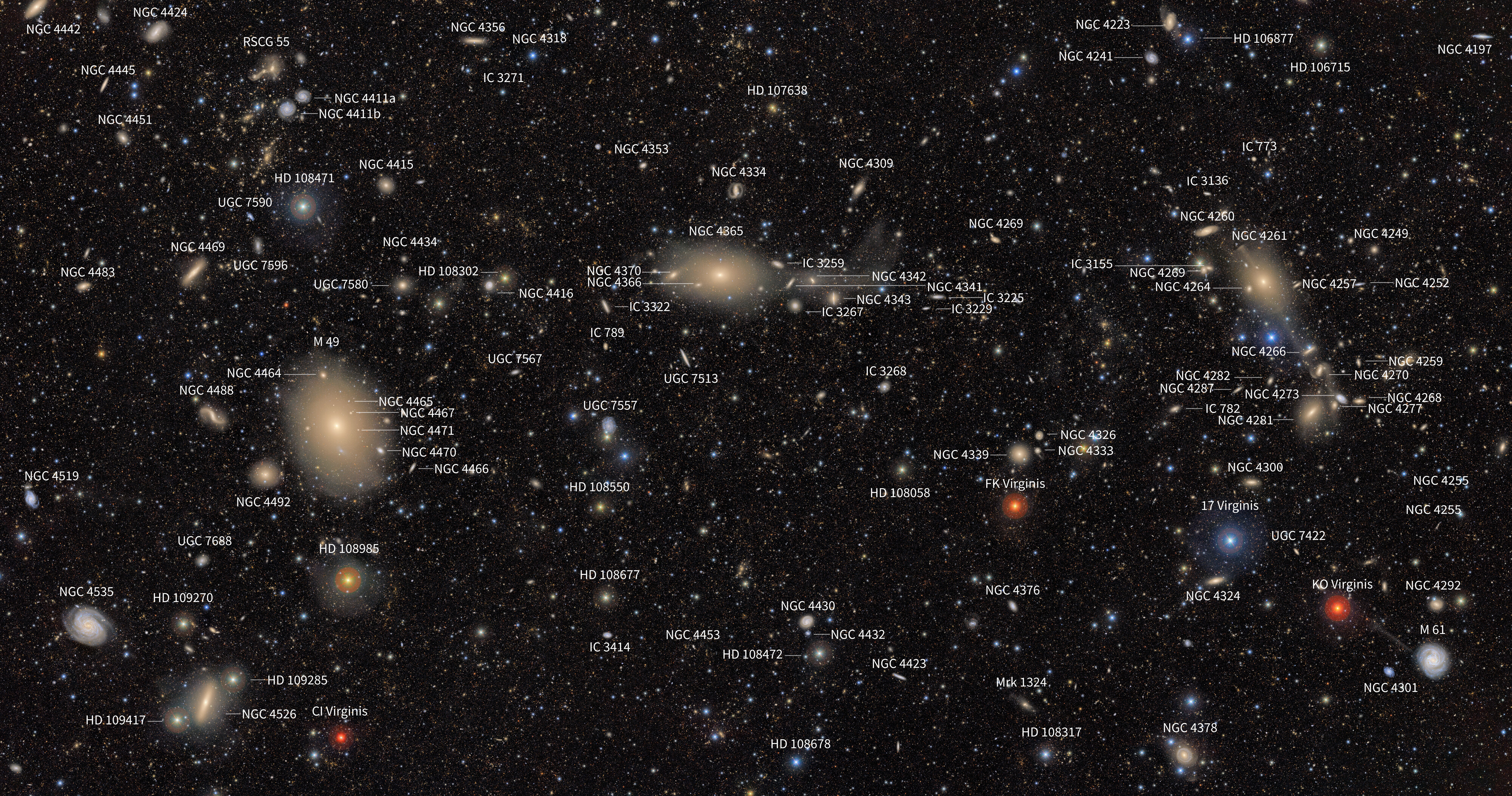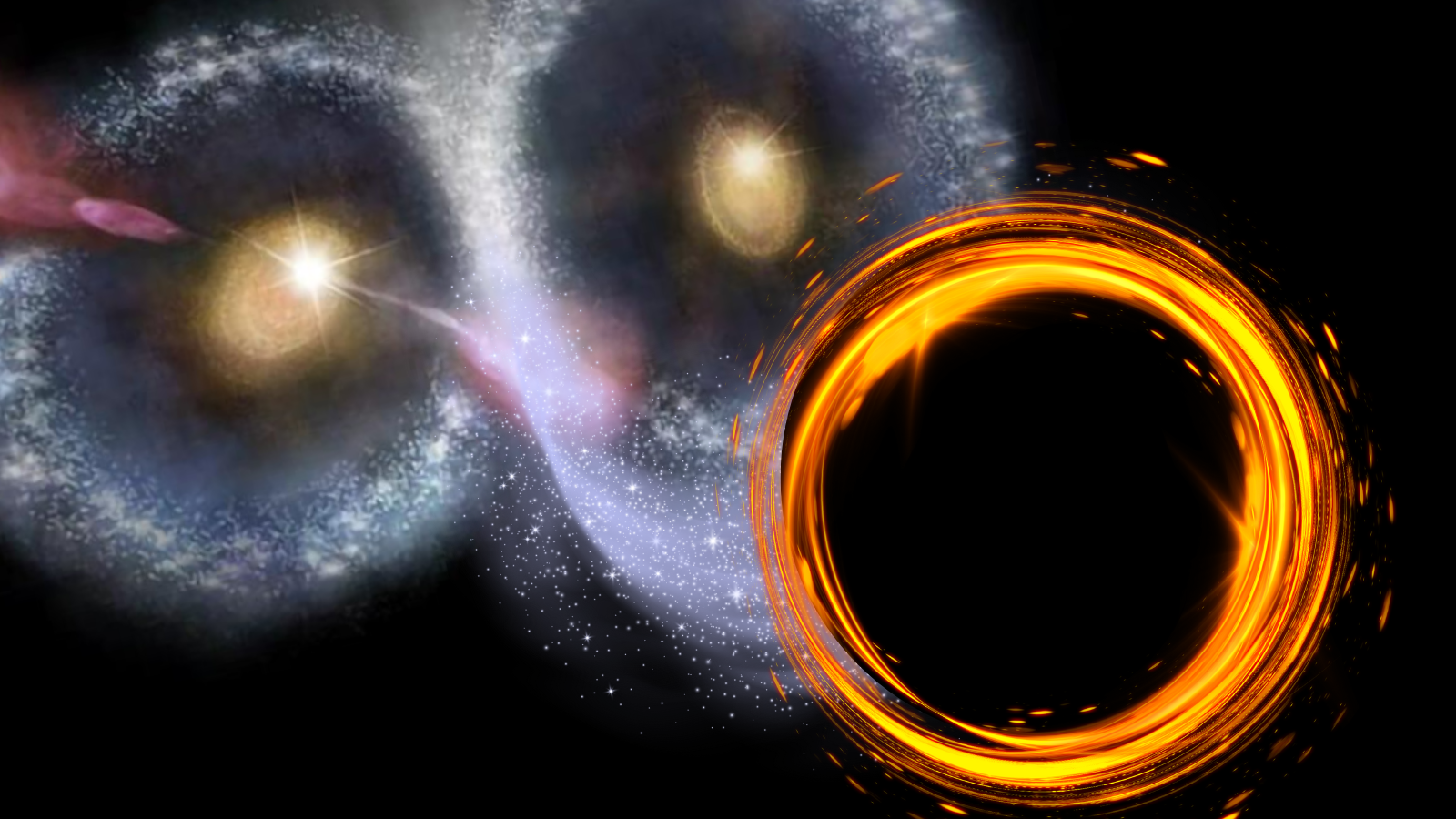Vera C. Rubin Observatory: Everything you need to know
The Vera C. Rubin Observatory has begun the 10-year-long Legacy Survey of Space and Time to investigate mysteries like the nature of dark energy.
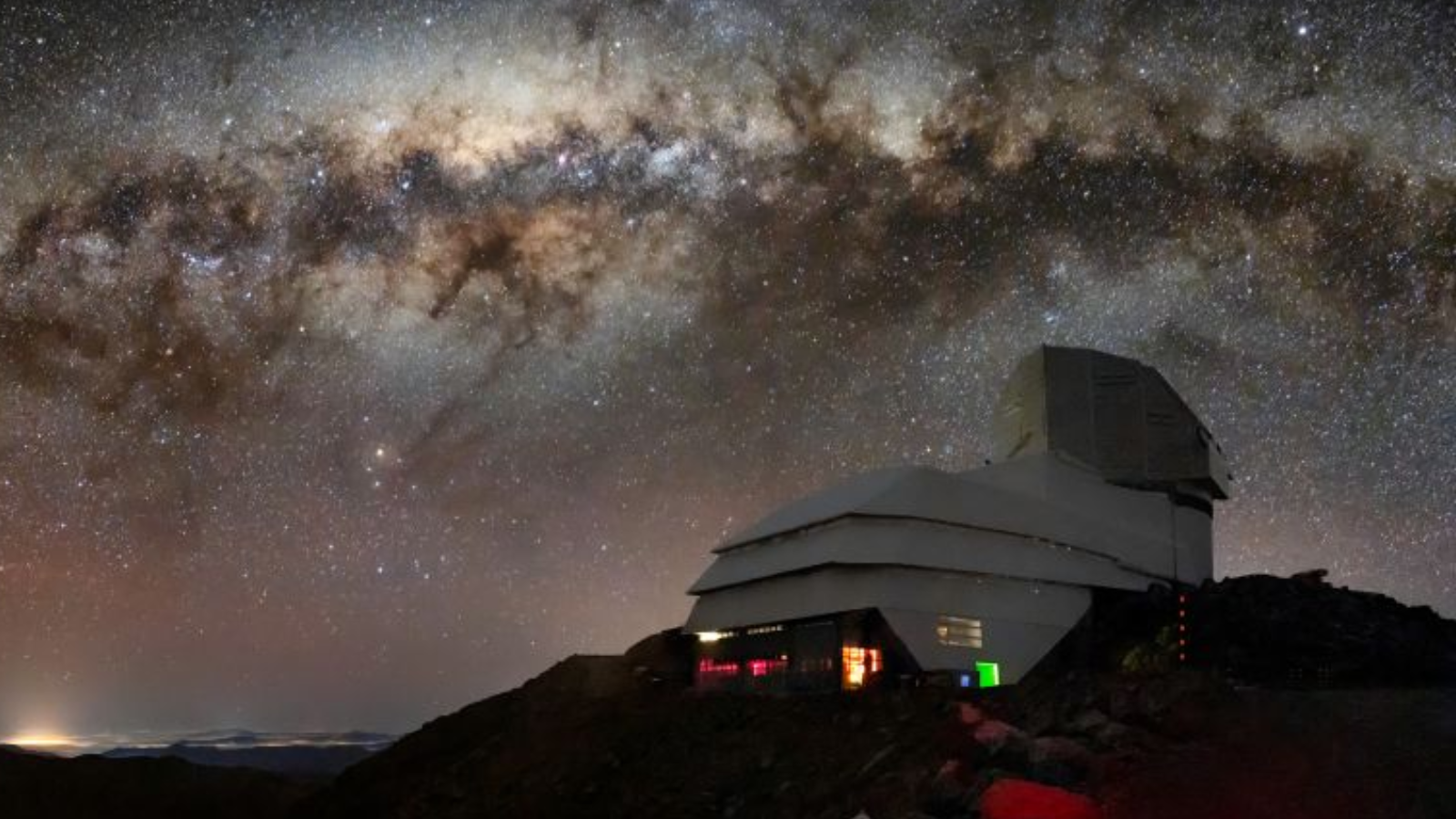
On June 23, 2025, the Vera C. Rubin Observatory revealed its first images to the wider scientific community and the general public. Beyond their aesthetic value, these truly stunning images represented a monumental step forward in astronomy, signalling the commencement of the 10-year-long Legacy Survey of Space and Time (LSST).
This will see Rubin use the Simonyi Survey Telescope and the largest digital camera in the world, the LSST camera (LSSTCam), to scan the entire visible southern hemisphere sky in wavelengths of light across the electromagnetic spectrum from invisible infrared wavelengths to the optical wavelengths our eyes have evolved to see.
From its location perched upon the El Peñón peak of Cerro Pachón, 8,684 feet (2,647 meters) above sea level, Rubin takes advantage of the dry and clear conditions of northern Chile to take over 800 panoramic images each night, covering the entire sky once every three to four nights.
This repeated scanning of the sky, enabled by the fastest telescope mount ever devised for a telescope of this size and a wide-field of view, will help Rubin observe how faint celestial objects change over time, enabling the observatory to create a detailed "10-year-long movie" of the cosmos and conduct observations that could reveal the secrets of dark energy, the mysterious force causing the expansion of the universe to accelerate, and dark matter, collectively referred to as the "dark universe." But Rubin promises to deliver so much more than this.
Rubin: Heritage and history
The Rubin Observatory takes its name from American astronomer Vera C. Rubin, whose work was essential in establishing the existence of a strange, effectively invisible form of matter in the universe, later dubbed "dark matter." This discovery resulted from Rubin studying the rotational velocity of around 60 galaxies in the 1960s. Rubin and colleagues found that the outer edges of these galaxies are rotating so rapidly that if it were only the gravitational influence of the visible matter within them holding them together, the constituents of these galaxies should have flown apart. That means there must be invisible matter providing an additional gravitational "glue" to keep these galaxies intact.
What we now know as the Rubin Observatory began life in the early 1990s as a plan to push forward the frontiers of astronomy in the form of sketches on a napkin. The concept was first known as the "Dark Matter Telescope," but by the time it was presented as a concept in a 2001 report titled "Astronomy and Astrophysics in the New Millennium," it had adopted the name the Large-Aperture Synoptic Survey Telescope. This reflected the fact that its mission had expanded beyond just the investigation of dark matter.
Between 2001 and 2010, the Large-Aperture Synoptic Survey Telescope received support from the National Science Foundation (NSF) and the U.S. Department of Energy (DoE), as well as private pledges from software billionaires Charles Simonyi and Bill Gates, totalling 30 million USD.
Breaking space news, the latest updates on rocket launches, skywatching events and more!
Renamed the Large Synoptic Survey Telescope (LSST), construction of this new astronomy project began on Cerro Pachón in 2015. In the same year, the SLAC National Accelerator Laboratory began to assemble what would become known as the LSST camera. This 3,200-megapixel camera is the size of a compact car and weighs in at 3 metric tons, which is about half the weight of a male African bush elephant, making it the world's largest digital camera. The LSST camera was completed in April 2024 and was installed at the observatory in March 2025. The telescope's mirrors and telescope mount had begun to arrive at the Cerro Pachón construction site as early as 2018.
In Dec. 2019, the Large Synoptic Survey Telescope was finally renamed the Vera C. Rubin Observatory, honoring the legacy of this pioneering astronomer and staunch supporter of women in science who passed away in 2016. Thus, Rubin became the first major, publicly funded astronomy facility in the U.S. to be named after a woman.
As of July 17, 2025, the formal conclusion of the construction of Rubin was pushed back from Sept. 19, 2025, to Oct. 24, 2025. Despite this, the telescope has already begun to make observations of the cosmos with "first light" received in January 2025, with the LSST 10-year survey mission set to begin between 4 and 7 months after this.
The first data release from Rubin is expected to occur around 12 to 14 months after the start of the LSST.
According to the website of the Vera C. Rubin Observatory, Rubin's "10-year movie of the cosmos will bring the night sky to life, yielding a treasure trove of discoveries." Specifically cited in the mission plan of Rubin Observatory are the following four main science areas:
- Understanding the nature of dark matter and dark energy
- Creating an inventory of the Solar System
- Mapping the Milky Way
- Exploring objects that change position or brightness over time
Delving into the dark universe
One of the most important type of events that Rubin will be investigating are cosmic explosions called supernovas. It is predicted that Rubin is capable of discovering between three to four million more supernovas over a vast range of distances during the ten-year LSST survey. That would represent a massive step forward in our understanding of the physics behind these cosmic explosions.
Because the elements forged by stars and ejected by massive stellar bodies as they die in powerful "core-collapse" supernovas go on to form the building blocks of the next generation of stars, such a vast catalog of these events could paint a much more detailed picture of stellar life, death, and rebirth than ever available previously.
Some of the supernovas discovered by Rubin will be so-called "Type-Ia" supernovas, which occur when white dwarf stellar remnants explode after gorging on material stripped from a companion star. These events are very important for astronomers as their light output is very uniform from event to event, leading scientists to dub them "standard candles."
Observing Type-Ia supernovas and determining how much their light output or "spectrum" has been redshifted gives astronomers a way to measure cosmic distances. This, in turn, can be used to measure the "Hubble constant," the speed at which the universe is expanding, and that is key to understanding the impact of dark energy over cosmic time.
That's how Rubin will contribute to the understanding of dark energy, but what about the other dark universe dweller, dark matter?
To get to the bottom of this mysterious substance, which accounts for around 85% of the universe's total matter content, Rubin will take inspiration from its namesake and go galaxy hunting, examining how this invisible matter influences visible matter. During the LSST, the next-generation observatory is expected to catalog over 10 billion galaxies in the sky over the southern hemisphere.
This will reveal the large-scale structure of the universe, allowing astronomers to trace the galaxies flowing along filaments of dark matter. These tendrils are thought to be the cosmic scaffold along which galaxies are believed to have gathered and grown. The size of these filaments, and the voids between them, could help to reveal what dark matter is.
Rubin's search of our cosmic backyard
Closer to home, Rubin and its LSST project are set to make an important contribution to our understanding of Earth's cosmic backyard. This will include mapping the Milky Way in unprecedented detail. This will involve the cataloging of 10 billion stars, which, thanks to Rubin's infrared vision, will include faint stars shrouded in dense cosmic gas and dust that may have evaded previous detection.
Creating an inventory of stars beyond the dense stellar halo of the Milky Way and measuring their chemical makeup could help determine how our home galaxy and its stellar content have evolved over billions of years.
With its capability to perform repeated patches of sky, Rubin could spot faint and fast-moving objects as they whip through the Milky Way. Many of these could be free-floating rogue planets that have been ejected from their home star systems by interactions with their planetary siblings or with passing stars.
It is also predicted that Rubin could detect thousands of so-called "failed star" brown dwarfs within the Milky Way. These celestial bodies with masses between 13 and 80 times that of Jupiter (0.013 to 0.08 times the mass of the sun) are thought to form like stars but fail to gather enough material to reach the mass needed trigger the nuclear fusion of hydrogen to helium, the process that defines that a main sequence star is, in their cores.
This makes them extremely faint and elusive, but also extremely important for understanding how stellar bodies form and evolve.
In the more immediate vicinity of Earth, Rubin is set to make a sterling contribution to the cataloging of asteroids and other small objects close to the sun. Indeed, even before the observatory's first proper data release drops, it seems to be living up to this promise.
The first set of solar system observations released by Rubin included a staggering 2,014 never-before-seen solar system asteroids. These included 7 near-Earth objects, 11 Jupiter Trojans, and 9 trans-Neptunian objects. The 2,014 new solar system bodies were part of just under 4,000 asteroid and comet observations already made by Rubin!
Currently, humanity, with all of its telescopes and observatories, discovers around 20,000 asteroids each year. That means just a few nights, Rubin achieved the detection of over 10% of this annual haul of asteroids.
While those are just a taste of some of the things that Rubin will investigate and could stand to discover, perhaps the most exciting promise this observatory holds is the discovery of the unexpected.
"I'm thrilled to see what the scientific community will do with this data. I'm especially excited about the new questions that will emerge — questions we haven't even imagined yet," Rubin Observatory's Community Science Team member and Stanford University researcher Andrés Alejandro Plazas Malagón told Space.com in June. "We've built a discovery machine, and that's incredibly exciting to me. One of the most exciting aspects is the unexpected discoveries that lie ahead!"
Additional resources
Space.com covered the release of the first images from Rubin in a gallery format for your viewing enjoyment back in June. If you want to know more about the life of astronomer Vera C. Rubin, who passed away in 2016, the National Women's History Museum is an excellent resource. Want to quickly explain what the Rubin Observatory is and why it matters to friends? The Rubin Observatory YouTube channel can get you up to speed in just over a minute!
Bibliography
Revolutionary Rubin Observatory debuts with first images taken by world's largest camera, UC Santa Cruz, M. Peña, [https://news.ucsc.edu/2025/06/rubin-observatory-contributions/] Accessed 07/31/25
Who was Vera Rubin? Vera C. Rubin Observatory, [https://rubinobservatory.org/about/vera-rubin] Accessed 07/31/25
History, Vera C. Rubin Observatory, [https://rubinobservatory.org/about/history] Accessed 07/31/25
Rubin's Opening Act — a Swarm of New Asteroids, Vera C. Rubin Observatory, [https://rubinobservatory.org/news/rubin-first-look/swarm-asteroids] Accessed 07/31/25
Ever-changing Universe Revealed in First Imagery From NSF–DOE Vera C. Rubin Observatory, Vera C. Rubin Observatory, [https://rubinobservatory.org/news/first-imagery-rubin] Accessed 07/31/25
New windows on the Universe, Vera C. Rubin Observatory, [https://www.lsst.org/content/new-windows-universe] Accessed 07/31/25
NSF–DOE Rubin Observatory Will Detect Thousands of Elusive Brown Dwarfs, Unlocking Milky Way Mysteries, Vera C. Rubin Observatory, [https://rubinobservatory.org/news/rubin-detect-brown-dwarfs] Accessed 07/31/25
Mapping the Milky Way & Environs, Vera C. Rubin Observatory, [https://www.lsst.org/science/mapping-milky-way/studying], Accessed 07/31/25

Robert Lea is a science journalist in the U.K. whose articles have been published in Physics World, New Scientist, Astronomy Magazine, All About Space, Newsweek and ZME Science. He also writes about science communication for Elsevier and the European Journal of Physics. Rob holds a bachelor of science degree in physics and astronomy from the U.K.’s Open University. Follow him on Twitter @sciencef1rst.
You must confirm your public display name before commenting
Please logout and then login again, you will then be prompted to enter your display name.
